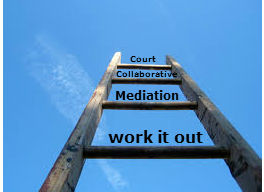
I know. I’m lazy. But I made myself a New Years resolution that I would write myself something really special. Which means I have ’til December, right?
Catherine O’Hara
We all know the drill. That magic date is fast approaching: January 1st. A new beginning. A chance to start over. And in honor of the date, we make New Year’s Resolutions. We make a firm commitment to do or not do something (One of Webster’s definitions of “resolution”). “I resolve to lose 30 pounds”. “I resolve to stop smoking.” “I resolve to save money this year.” “I resolve to have a better relationship with my kids.” We say the words and we take some initial action to make it happen. Maybe we join the gym, or buy Nicorette gum, or make a new budget, or announce to our family that we are going to be more available to them. Have you ever noticed how full the gym is on January 2nd? But these resolutions rarely ever work. Have you ever noticed how empty the gym is again by January 30th?
I too have tried the New Year’s Resolution game and I too have failed. But that fact just puts me in the majority. According to a 2007 University of Hertfordshire study, 88% of resolutions fail. So, if these big proclamations are bound to fail, why try? Well, the basis of trying to be better, of doing things we know are good for us or not doing things we know are bad for us is a worthwhile endeavor. The point is to find a way to set ourselves up for success rather than failure. To set resolutions and then fail at them can actually be harmful. It can lower self-esteem and further a feeling of inadequacy.
So, how do we set ourselves up for success at self-improvement? Studies have shown that there are some ways to achieve lofty goals and make major changes. After all, 12% of resolutions actually succeed. Here are some hints to make better resolutions that just might work:
- Set specific goals. If your goals are too vague they are harder to quantify and achieve. Rather than “I want to lose weight”, “I want to save money” or “I want to have better relationships”, set measurable, specific goals. How much weight, how much money, in what ways should relationships improve? Make your goals measurable and attainable.
- Know your Whys. I have often discussed that for negotiations the question “why?” can be critical. It is for resolutions as well. As you think about the goals that you want to set, be very specific about why these are your goals. What will you gain if you accomplish your goal. Many people talk about losing weight so that they can see their children graduate from high school, or saving money so that they aren’t forced to eat cat food as their main protein source in old age (okay, that is my reason.) Picture your life when the goal is achieved. How will it be better. Make the image vivid and glorious. Dwell on this image and the things you will have when the goal is accomplished. Imagine the joyous time you will have travelling the world in retirement or how fun it will be to play with your children without being out of shape. Make your “whys” more important than your “why nots”.
- Break the goals down to smaller and smaller steps. Resolve to just not eat sugar for today. Resolve to give up one Grande Macchiato Latte per day and save the $6.00 in a drawer each day for a month. (Sorry fancy coffee shop, but I think you will survive.) Resolve to have fun with some exercise just for today. Then tomorrow wake up and resolve to take one more step towards your goal. There is a reason why the successful organization of AA (and all the other Anonymous groups) use the “one day at a time” motto. If you can string enough successful days together you will develop a habit that becomes a new way of living. You only have to string together the majority of 365 days to have an extremely successful year.
- Do not make too many changes at once. Another study, this one by Stanford University, tested subject’s ability to make good choices when their minds were busy with a difficult task. Some subjects were asked to memorize a two digit number and others were asked to memorize a seven digit number. After having some time to work on memorizing the number the subjects were told to walk down a hall and report the number. On the way down the hall they were offered some fruit or chocolate cake. The subjects with the longer number were twice as likely to take the cake over the fruit as the subjects with the shorter number. The professors found that when your brain is busy trying to do a difficult task you are less likely to have the cognitive ability to make good choices. (This is my go to excuse for taking the chocolate cake every time – I am just doing too much with my brain.) Therefore, try to limit the goals to just one specific, attainable goal at a time. Don’t make your brain work so hard at trying to change everything at once.
- Celebrate your success and forgive your setbacks. When you attain a short term goal celebrate. Perhaps seven days of saving the funds from your Latte warrants an extra 30 minutes of TV in the evening. Or after losing five pounds you should buy yourself a new set of running shoes. But if one day you fall off the wagon and eat the cake, don’t beat yourself up. This is not failure, this is a setback. If your child came to you and told you that she did not achieve her goal for one day would you berate her and tell her that she was a failure and should stop trying? (If you answer yes to this question, then perhaps we should have a talk about positive parenting.) Of course not, you would tell her that you are proud of her trying to better herself and you know she can succeed when she gets back on track tomorrow. So, be as nice to yourself as you would be to your child. Don’t beat yourself up. Every successful person has failed hundreds of times before they accomplished their goals. If you question your ability to succeed, check out the list of 50 famous “failures”. http://www.budbilanich.com/50-famous-people-who-failed-at-their-first-attempt-at-career-success/
- Develop a social support system. You may have a hard time recognizing your accomplishments but others will surely see you trying and help you celebrate your success. I have several friends that are working hard at getting in shape. We still occasionally go out for “drinks” after work. However, they drink water and order salads. I am thrilled for them and honor their accomplishments. If you have friends that don’t celebrate your goals for self-improvement then maybe you have the wrong friends at the wrong times. You can still be friends with these folks but just don’t include them in activities where they can sabotage your forward movement. You have to know your temptations and include friends and family members in ways that will support you in overcoming them. You can also use your goals to develop new friends that support you. Join a club that supports your goals such as a runners club or a weight watchers group or an investing club. You will have a chance to meet others who have succeeded, learn from them and celebrate your successes with like-minded people. These folks can hold you accountable and be a coach through hard times.
Okay. So I don’t actually hate New Year’s Resolutions. I just hate ones that are set up for failure. I try to make resolutions regularly in my life. Some are more successful than others. None are done just once a year on a magic day in the middle of the winter. I do like to use this magic time to review last year’s goals and celebrate the successes. Then I examine the places where I may not have accomplished my goals and see how I can better work towards success. Finally, I plan my next year out with overall goals, manageable steps to accomplish these goals and planned rewards for my success. (Yes, I like the word success Just saying it makes me feel successful.) This works for me. My sincere hope is that it will work for you and 2015 will be your best year ever! Happy New Year!




